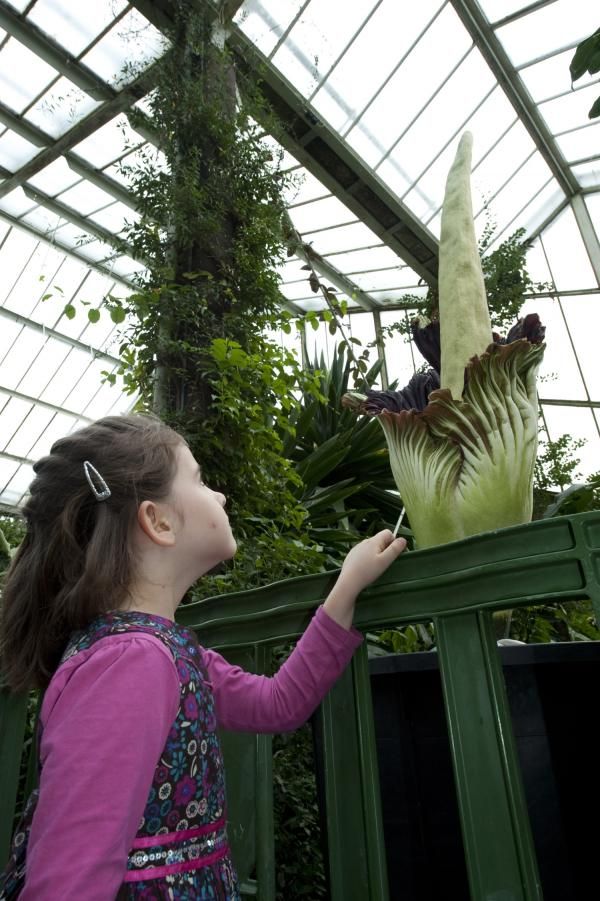
At Kew Gardens, A Corpse Flowers Blooms

A "corpse flower" nicknamed for the rotten meat smell it releases as it blooms revealed its fetid flower last week (Oct. 26) at the Royal Botanical Gardens, Kew in England.
"Jaw dropping site," said Rosemary Walbancke, on Kew's Facebook fan page. "But boy does it smell bad."
The flower is a rare example of the Indonesian Titan Arum (Amorphophallus titanum) plant. Native to the equatorial rainforests of central Sumatra in western Indonesia, it evolved its horrendous odor to attract pollinating carrion beetles and flesh flies, which normally feed on rotting flesh. A corpse flower's bloom is rare and unpredictable, and typically only lasts a day. [See the stages of a corpse flower's bloom .]
The corpse flower bloom is actually not a single flower, but thousands of tiny flowers, which botanists call an inflorescence. Titan Arum's inflorescence is the largest in the world.
Titan Arums, when fully open, can stand over 6.5 feet (2 meters) tall and spread 3.5 feet (1 m) across. This year has seen several corpse flowers bloom, including one named Metis at Binghamton University in upstate New York and one dubbed Titan 3 at Western Illinois University.
Kew Gardens has a large number of these plants, and as such, flowerings have become a remarkably common occurrence there have been more than three times as many titan arums flower at Kew in the last six years than in the previous 120 years, according to the Garden's website .
{youtube AD75AA9m03E}
Sign up for the Live Science daily newsletter now
Get the world’s most fascinating discoveries delivered straight to your inbox.
A titan arum bloomed at Kew Gardens earlier this year (video above) and more pictures of the current flower's bloom can be found on Kew Garden's flickr page.












